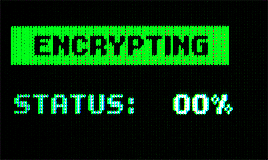Posted on February 6, 2025
Modern Cryptography: Methods and Applications

Modern cryptography is a sophisticated field that leverages mathematical theories, computer science, and information theory to secure communication, protect data privacy, and ensure data integrity. Here’s an in-depth look at its key aspects, methods, and examples:
1. Core Concepts:
Encryption: Transforming readable data (plaintext) into an unreadable format (ciphertext) to hide its content.
Decryption: Reversing the encryption process to convert ciphertext back to plaintext, only possible with the correct key.
Key: A piece of information used in the encryption and decryption process. The security of the system often depends on the secrecy of the key rather than the algorithm.
2. Types of Cryptography:
Symmetric Key Cryptography:
Description: Uses a single key for both encryption and decryption.
Examples:
AES (Advanced Encryption Standard): Widely used for securing sensitive but unclassified material by U.S. Government agencies. AES operates on fixed block sizes of 128 bits using keys of 128, 192, or 256 bits.
DES (Data Encryption Standard): An older standard, now largely replaced by AES due to its vulnerability to brute-force attacks.
Example of Symmetric Encryption:
Plaintext: “Hello, World!”
Key: “mysecretkey”
Ciphertext: “63536376c367d376” (Hypothetical encryption result)
Asymmetric (Public Key) Cryptography:
Description: Uses two keys: a public key for encryption and a private key for decryption.
Examples:
RSA (Rivest–Shamir–Adleman): One of the first public-key cryptosystems and is widely used for secure data transmission. RSA involves large prime numbers which make factorization computationally challenging.
ECC (Elliptic Curve Cryptography): Offers equivalent security with smaller key sizes, making it suitable for environments where bandwidth, processing power, or storage are limited.
Example of Asymmetric Encryption:
Public Key: Used by sender to encrypt the message.
Private Key: Used by receiver to decrypt the message.
Message: “Secure communication”
Public Key Encryption Result: “c7d38c…679” (Hypothetical enciphered text)
Hash Functions:
Description: One-way functions that convert data of any size to a fixed-size string of characters, which ideally should be unique to each unique data input.
Examples:
SHA-256 (Secure Hash Algorithm): Produces a 256-bit hash value, used in blockchain technologies like Bitcoin for mining and transaction verification.
MD5 (Message-Digest algorithm 5): Though now considered cryptographically broken for many applications due to collision vulnerabilities, it’s still used in some scenarios for data integrity checks.
Example of Hash Function:
Input: “password123”
SHA-256 Output: “ef92b778bafe771e89245b89…89” (Hypothetical hash)
3. Applications:
Secure Communication: SSL/TLS for securing web traffic, VPNs for private network connections.
Digital Signatures: Ensuring the authenticity and integrity of a message or document, e.g., in legal or financial documents.
Blockchain and Cryptocurrencies: Securing transactions and maintaining the integrity of the ledger in systems like Bitcoin or Ethereum.
4. Challenges and Developments:
Quantum Computing: Poses a threat to many current encryption methods, leading to research in quantum-resistant algorithms.
Side-Channel Attacks: Exploiting physical implementations of cryptographic systems rather than the algorithms themselves.
Post-Quantum Cryptography: Efforts to develop cryptographic systems that are secure against both classical and quantum computing attacks.
5. Ethical and Legal Considerations:
Privacy vs. Surveillance: Balancing individual privacy rights with national security or law enforcement needs.
Export Regulations: Many countries have laws controlling the export of strong cryptographic software.
Modern cryptography continues to evolve, adapting to new threats and technological advancements, ensuring that data remains secure in an increasingly digital world.
Here are some additional examples across various applications of modern cryptography:
Secure Email:
PGP (Pretty Good Privacy):
Description: An encryption program that provides cryptographic privacy and authentication for data communication.
Example: Alice wants to send a secure email to Bob. She encrypts her message using Bob’s public key. Only Bob can decrypt this message with his private key:
Plaintext: “Meet at the park at 3 PM”
Encrypted Text: “ajkglfhw3812n…982” (Hypothetical encrypted message)
Secure Web Browsing:
HTTPS (HTTP Secure):
Description: Uses TLS (Transport Layer Security) to secure HTTP communication between web browsers and servers.
Example: When you access a banking site, your browser uses the site’s public key to encrypt the data you send. Only the bank’s server, with the corresponding private key, can decrypt this data.
Digital Signatures:
ECDSA (Elliptic Curve Digital Signature Algorithm):
Description: Used for digital signatures based on elliptic curve cryptography.
Example: A software developer signs their code with a private key. Users can verify the signature using the developer’s public key to ensure the code hasn’t been tampered with:
Signature: “a3b2c1d4e5…” (Hypothetical signature)
Verification: Users check if the signature matches the public key provided by the developer.
Blockchain and Cryptocurrency:
Bitcoin Transaction Encryption:
Description: Uses SHA-256 for hashing and ECDSA for signing transactions.
Example: When a Bitcoin transaction occurs:
Transaction Data: “Alice sends 1 BTC to Bob”
Hash: SHA-256 hash of the transaction data.
Signature: Alice signs the hash with her private key to prove ownership and authenticity.
Secure File Storage:
Cloud Storage Encryption:
Description: Services like Dropbox or Google Drive might offer the option to encrypt files client-side before they are uploaded.
Example:
File: “sensitive.docx”
Encrypted File: “sensitive.encrypted”
Key: User’s encryption key stored only on their device or in a secure key management system.
Zero-Knowledge Proofs:
zk-SNARKs (Zero-Knowledge Succinct Non-Interactive Argument of Knowledge):
Description: Allows one party to prove to another that a statement is true without revealing any information beyond the validity of the statement.
Example: In Zcash, a cryptocurrency, users can prove they have the funds to spend without revealing how much they have or where it came from:
Proof: “I can spend this amount” without disclosing the amount or source.
Secure Messaging:
Signal Protocol:
Description: Used by apps like Signal, WhatsApp (for end-to-end encryption), providing forward secrecy where each message has a unique encryption key.
Example: Alice sends a message to Bob:
Message: “Meeting at 7”
Encryption: Each message is encrypted with a new session key, ensuring past messages remain secure even if future keys are compromised.
Smart Cards:
Chip-and-PIN:
Description: Cryptographic operations are performed within the card to authenticate transactions.
Example: When you use your credit card at a POS terminal:
PIN Entry: Entered PIN is encrypted by the smart card.
Challenge-Response: The card responds with an encrypted challenge, which only the correct PIN can decrypt properly.
These examples highlight how modern cryptography serves as a backbone for security in numerous digital interactions, keeping data, identities, and communications protected in an ever-evolving technological landscape.





 Bitcoin
Bitcoin  Ethereum
Ethereum  Tether
Tether  XRP
XRP  Wrapped SOL
Wrapped SOL  Dogecoin
Dogecoin  Bitcoin Cash
Bitcoin Cash  Zcash
Zcash  Monero
Monero  Litecoin
Litecoin  PAX Gold
PAX Gold